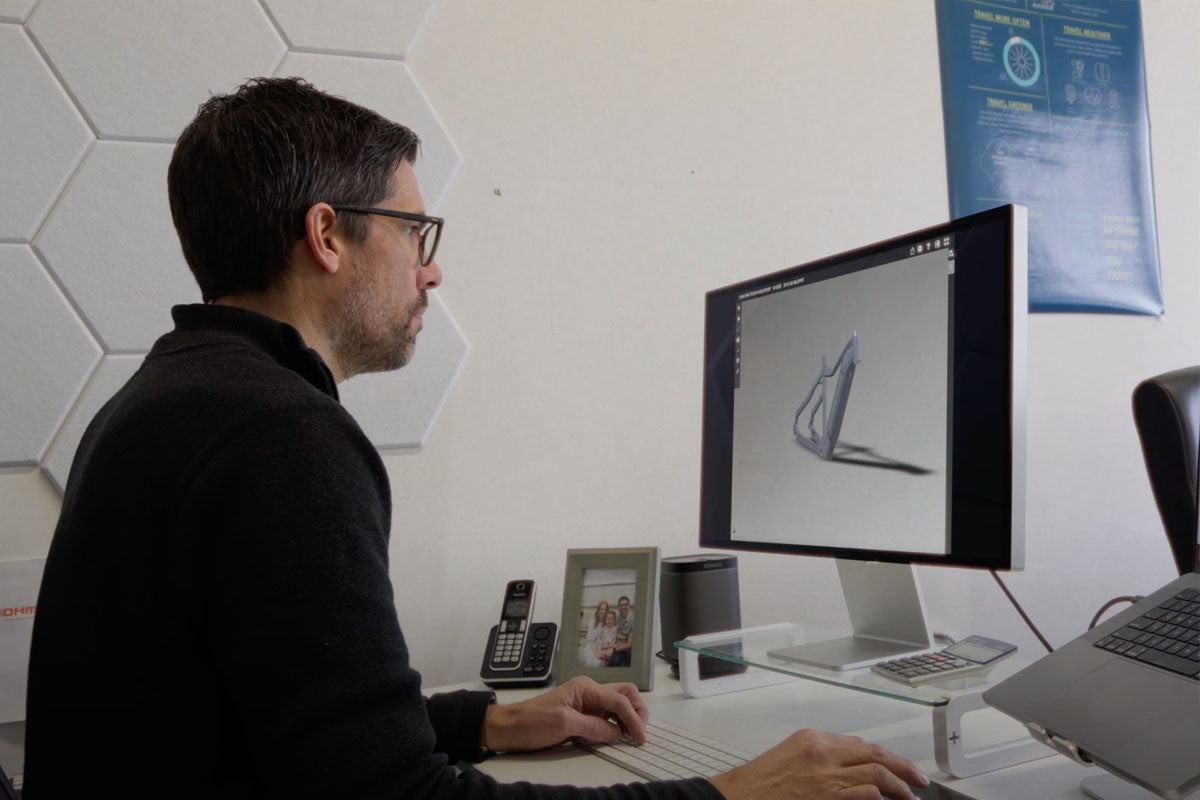In the world of mobility solutions, true innovation isn't just about improving performance—it's about expanding possibilities for everyone. This principle has guided OHM Electric Bikes' recent groundbreaking project: developing a specialized bicycle braking system that enables dual arm amputees to ride safely and confidently.
The Challenge of Inclusive Cycling
For most cyclists, braking is a simple, intuitive action. But for riders with dual arm amputations, traditional brake systems present a seemingly insurmountable barrier to independent cycling. This challenge became the catalyst for OHM's latest innovation.
"We've always believed that cycling should be accessible to everyone," explains Michael DeVisser, CEO of OHM Electric Bikes. "When we recognized this gap in adaptive cycling technology, we committed to finding a solution that would maintain both safety and rider independence."

From Concept to Reality: The Power of Local Collaboration
The journey began with a simple question: how can we reimagine bicycle braking for riders without conventional hand control? The answer would require not just innovative thinking, but cutting-edge manufacturing techniques.
OHM found the perfect partner in Upsurge, a North Vancouver-based company specializing in industrial-grade 3D printing. This local collaboration brought together OHM's expertise in electric bike design with Upsurge's advanced manufacturing capabilities.
"The beauty of working with a local innovator like Upsurge was the ability to rapidly prototype and refine our designs," DeVisser notes. "Their industrial-grade 3D printing technology allowed us to create complex, customized components that traditional manufacturing methods simply couldn't deliver efficiently."

The Technology Behind the Innovation
What makes OHM's adaptive braking system revolutionary isn't just its purpose, but its sophisticated approach to solving multiple challenges simultaneously:
- Customized Control Interfaces: The system adapts to each rider's unique physical capabilities, offering multiple control points.
- Responsive Actuators: Using precision engineering, the system translates various inputs into controlled braking force.
- Durability Through Advanced Materials: Upsurge's industrial-grade 3D printing techniques create components that withstand real-world cycling conditions.
- Seamless Integration: The system maintains the sleek, integrated design aesthetic that OHM Electric Bikes is known for.
Erich Martínez, Founder of Upsurge, explains the manufacturing breakthrough: "Industrial-grade 3D printing allowed us to create complex geometries and internal structures that would be impossible with traditional methods. This means each component can be both lightweight and incredibly strong—essential qualities for cycling applications."

Beyond Technology: The Human Impact
While the technical achievement is significant, the real measure of this innovation is its impact on riders' lives. The system transforms what was once impossible into a new reality of independence and mobility.
"This isn't just about solving an engineering problem," DeVisser emphasizes. "It's about giving freedom back to cyclists who thought their riding days might be over. There's a profound emotional component when someone realizes they can ride again."
This human-centered approach has defined OHM Electric Bikes since its founding in 2005. The company has consistently pushed the boundaries of what's possible in electric bicycle design, with a particular focus on adaptability and inclusion.
Local Innovation with Global Implications
What started as a North Vancouver collaboration between two local companies has implications far beyond British Columbia. The adaptive braking system represents a significant advance in the broader field of adaptive sports technology.
"We're proving that local innovation can have global impact," says Martínez. "The techniques and approaches we've developed here can inspire adaptive solutions across many industries."
The project also demonstrates the value of targeted, specialized manufacturing. Rather than mass-producing a one-size-fits-all solution, the 3D printing approach allows for customization to meet individual needs—a model that could transform how adaptive equipment is designed and manufactured.

The Road Ahead
For OHM Electric Bikes, this breakthrough is just the beginning of a broader commitment to inclusive cycling innovation. The company continues to explore how advanced manufacturing techniques can solve other challenges faced by riders with diverse abilities.
"Innovation thrives when we focus on specific challenges faced by real people," DeVisser reflects. "This project has reinforced our belief that thoughtful design and cutting-edge technology can break down barriers we once thought permanent."
As the adaptive braking system moves toward broader availability, OHM Electric Bikes and Upsurge are already exploring additional applications for their collaborative approach to inclusive design.
In an industry often focused on incremental improvements in speed and power, OHM's work serves as a powerful reminder that the most meaningful innovations are those that expand the community of people who can participate. By reimagining what's possible through local collaboration and advanced manufacturing, OHM Electric Bikes isn't just changing how some people brake—they're changing who can ride in the first place.













